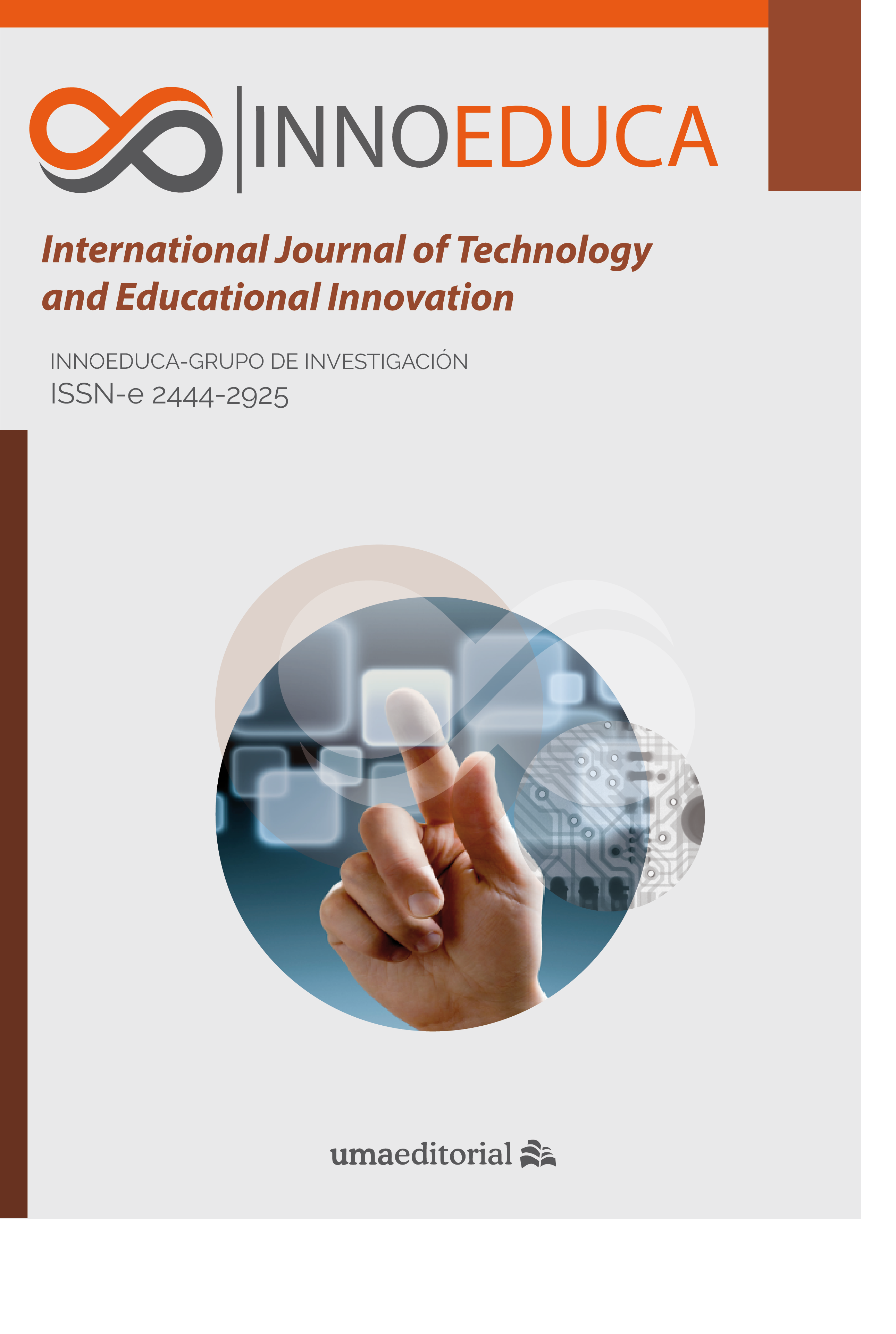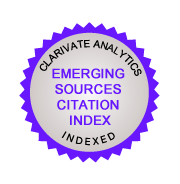Diversity of technological use in university students; the academic vs. the personal
DOI:
https://doi.org/10.24310/innoeduca.2021.v7i1.7868Keywords:
Technology, Higher education, Use, ContextAbstract
The integration of technology in the university environment requires both technological tools and pedagogical design that leads to effective practices. Our Universities have invested in resources and training for this, but the expected repercussion in the teaching-learning processes is taking time. In this study we want to start from the perception of the students about the university ICT resources and their use, and compare the expectations and use they make in this academic environment with the one they perform in their personal field. 186 students of the Degree in Education participated in the study and were given the ECAR test. The results of the descriptive and correlational analysis show that students ignore part of the university ICT resources and the pedagogical possibilities they offer. They prefer face-to-face teaching with minimal use of technology. It also found that the expectations and use made of ICT resources at the academic level differ substantially from what it does outside the classroom. In future lines, it would be necessary to solve why students do not know the university ICT resources and their educational possibilities and to what extent it affects the use and integration of the technology made by teachers in the expectations and use of them by students.
Downloads
Metrics
Publication Facts
Reviewer profiles N/A
Author statements
Indexed in
-
—
- Academic society
- N/A
- Publisher
- Universidad de Málaga
References
Baeten, M., Dochy, F., Struyven, K., Parmentier, E., & Vanderbruggen, A. (2016). Student-centred learning environments: an investigation into student teachers’ instructional preferences and approaches to learning. Learning Environments Research, 19(1), 43-62. 10.1007/s10984-015-9190-5
Bates, T. (2009). Promesas y mitos del aprendizaje virtual en la educación post-secundaria. In M. Castells (Ed.), La sociedad Red: una visión global (pp. 335-359). Alianza
Becker, S., Brown, M., Dahlstrom, E., Davis, A., DePaul, K., Diaz, V,. & Pomerantz. J. (2018). NMC Horizon Report: Higher Education Edition. EDUCAUSE, 2018
Bennett, S., Maton, K., & Kervin, L. (2008). The ‘digital natives’ debate: A critical review of the evidence. British Journal of Educational Technology, 39(5), 775-786. https://doi.org/10.1111/j.1467-8535.2007.00793.x
Boyd, D. (2014). It’s complicate: The social lives of networked teens. Yale University Press.
Brooks, D., & Pomerantz, J. (2017). ECAR Study of Undergraduate Students and Information Technology. Research report. ECAR.
Corrin, L. (2014). Examining digital natives: an investigation of university students’ engagement with technology [Doctoral dissertation, University of Wollongong]. http://ro.uow.edu.au/theses/4121
Erstad, O. (2010). Educating the digital generation. Exploring media literacy for the 21st century. Nordic Journal of Digital Literacy, 10, 85-102.
Escobar-Pérez, J., & Cuervo-Martínez, A. (2008). Validez de contenido y juicio de expertos: una aproximación a su utilización. Avances en medición, 6(1), 27-36.
Gallardo, E., Bullen, M., & Marqués, L. (2016). Student Communication and Study Habits of First-Year University Students in the Digital Era. Canadian Journal of Learning and Technology, 42(1), 1-21. https://doi.org/10.21432/t2d047
Gallardo, E. E., Marqués, L., Bullen, M., & Strijbos, J. W. (2015). Let’s talk about digital learners in the digital era. The International Review of research in open and distributed learning, 16(3). https://doi.org/10.19173/irrodl.v16i3.2196
Gisbert, M., & Esteve, F. (2016). Digital Leaners: la competencia digital de los estudiantes universitarios. La cuestión universitaria, (7), 48-59.
Gross, B., & Noguera, I. (2015). Fructuoso, Ingrid Noguera. Mirando el futuro: Evolución de las tendencias tecnopedagógicas en Educación Superior. Campus virtuales, 2(2), 130-140.
Helsper, E. J., & Eynon, R. (2010). Digital natives: Where is the evidence? British Educational Research Journal, 36(3), 503-520. 10.1080/01411920902989227
Hernández, J.P, & Torrijos, P. (2018). Percepción del profesorado sobre la integración de las Tecnologías de la Información y la Comunicación (TIC) en las modalidades docentes. Influencia del género y la edad. EDMETIC, Revista de Educación Mediática y TIC, 8(1), 128-146. https://doi.org/10.21071/edmetic.v8i1.10537
Hietajärvi, L., Salmela-Aro, K., Tuominen, H., Hakkarainen, K., & Lonka, K. (2019). Beyond screen time: Multidimensionality of socio-digital participation and relations to academic well-being in three educational phases. Computers in Human Behavior, 93, 13-24. https://doi.org/10.1016/j.chb.2018.11.049
Howe, N., & Strauss, W. (1991). Millennials Rising: The Next Great Generation. Vintage Original.
Kennedy, G., Dalgarno, B., Gray, K., Judd, T., Waycott, J., Bennett, S., & Chang, R. (2007). The net generation are not big users of web 2.0 technologies: Preliminary findings. En Ascilite (Ed.), ICT: Providing choices for learners and learning. Proceedings ascilite Singapore 2007 (pp. 517-525). Ascilite.
Kumar, S. (2009). Undergraduate Perceptions of the Usefulness of Web 2.0 in Higher Education: Survey Development. En D. Remenyi (Ed.), Proceedings of 8th European Conference on E-learning (pp. 308-314). ECEL
Muñoz, M. L. A., Zamorano, I. V., Riveros, S. M. A., & Cabero-Almenara, J. (2017). Tipologías para la Innovación tecnológica en Docentes de Educación Superior a partir de un análisis de conglomerados: un estudio exploratorio. Revista de Educación a Distancia, (55), 1-25. https://doi.org/10.6018/red/55/5
Navaridas, F., & Jiménez, M. A. (2016). Concepciones de los estudiantes sobre la eficacia de los ambientes de aprendizaje universitarios. Revista de Investigación Educativa, 34(2), 503-519. https://doi.org/10.6018/rie.34.2.239481
Pedró, F. (2009). New millennium learners in higher education: evidence and policy implications. Centre for Educational Research and Innovation (CERI). OECD.
Prensky, M. (2001). Digital natives, digital immigrants part 1. On the Horizon, 9(5), 1–6. 10.1108/10748120110424816
Prieto, J. C. S., Migueláñez, S. O., & García-Peñalvo, F. J. (2017). ¿Utilizarán los futuros docentes las tecnologías móviles? Validación de una propuesta de modelo TAM extendido. Revista de Educación a Distancia, (52), 1-31. https://doi.org/10.6018/red/52/5
Ramírez-Montoya, M. S., & García-Peñalvo, F. J. (2017). La integración efectiva del dispositivo móvil en la educación y en el aprendizaje. RIED. Revista Iberoamericana de Educación a Distancia, 20(2), 29-47. https://doi.org/10.5944/ried.20.2.18884
Recio Muñoz, F., Silva Quiroz, J., & Abricot Marchant, N. (2020). Análisis de la Competencia Digital en la Formación Inicial de estudiantes universitarios: Un estudio de meta-análisis en la Web of Science. Píxel-Bit. Revista De Medios Y Educación, (59), 125-146. https://doi.org/10.12795/pixelbit.77759
Romero, M. R., Castejón, F. J., López, V. M., & Fraile, A. (2017). Evaluación formativa, competencias comunicativas y TIC en la formación del profesorado. Comunicar, 52(25), 73-82. https://doi.org/10.3916/c52-2017-07
Romero, A., Tejada, E., & López, A. (2017). Desarrollo de la competencia TIC a través del Aprendizaje Servicio: una experiencia en la formación del profesorado de educación infantil. Revista Educativa Hekademos, 22, 46-57.
Sánchez, J. J. M., Ruiz, A. B. M., Sánchez, F. A. G., & Pina, F. H. (2013). Valoración de las TIC por los estudiantes universitarios y su relación con los enfoques de aprendizaje. Revista de investigación educativa, 31(2), 554. https://doi.org/10.6018/rie.31.2.151891
Tapscott, D. (1998). Growing up digital: the rise of the Net generation. McGraw-Hill.
Tejada, E., & Maiz, I. (2013). Nuevos escenarios digitales. Las tecnologías de la información y la comunicación aplicadas a la formación y desarrollo curricular. En: J. Barroso & J. Cabero, (Coords.)., La utilización de las redes sociales desde una perspectiva educativa (pp. 307-319). Pirámide.
Vázquez, S.; Alemán, L., & Gómez, M. (2016). Uso de las tecnologías de la información y la comunicación en el proceso de enseñanza-aprendizaje. Virtualidad, Educación y Ciencia, 12 (7), 76-84.
Waycott, J., Bennett, S., Kennedy, G., Dalgarno, B., & Gray, K. (2010). Digital divides? Student and staff perceptions of information and communication technologies. Computers & Education, 54(4), 1202-1211. https://doi.org/10.1016/j.compedu.2009.11.006
Zempoalteca, B., González, J., Barragán, J., & Guzmán, T. (2018). Factores que influyen en la incorporación de las Tecnologías de la Información y la Comunicación en universidades públicas: una aproximación desde la autopercepción docente. Revista de la Educación Superior, 47(186), 51-74. https://doi.org/10.36857/resu.2018.186.348
Downloads
Published
How to Cite
Issue
Section
License
All contents published by Innoeduca. International Journal of Technology and Educational Innovation are subject to Creative Commons Attribution-Nocomercial-NoDerivatives 4.0 International License, whose complete text can be consulted at https://creativecommons.org/licenses/by-nc-nd/4.0/legalcode. Thus, copying, distribution, public communication, derivative works and commercial use of content are permitted as of the aforementioned issue provided that the source and the author of the text are cited.
It is the responsibility of the authors to obtain the necessary permits for images that are subject to copyright.

This work is licensed under a Creative Commons Attribution-NonCommercial-NoDerivatives 4.0 International License.













242.png)








